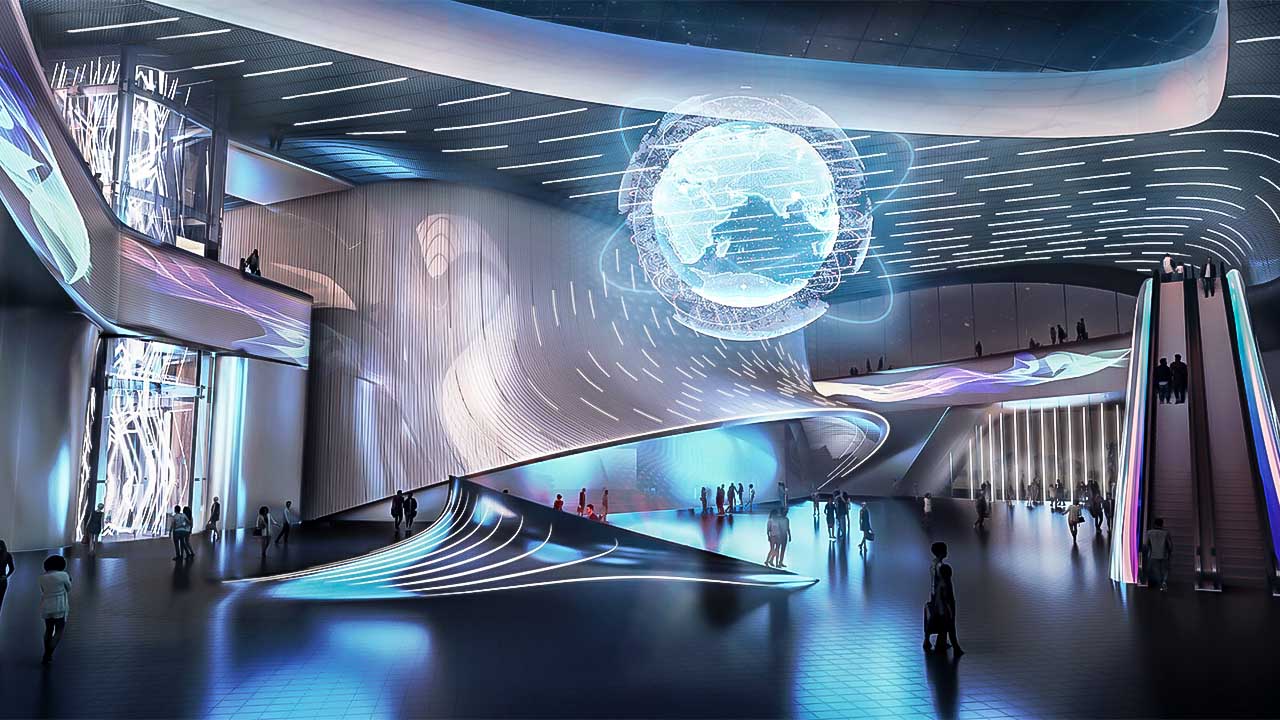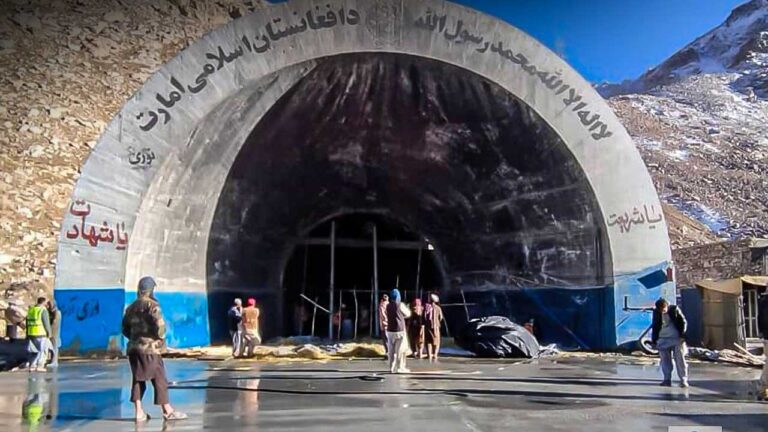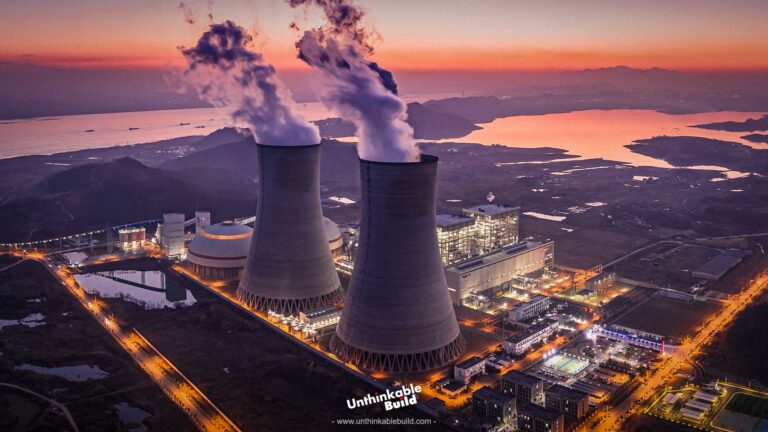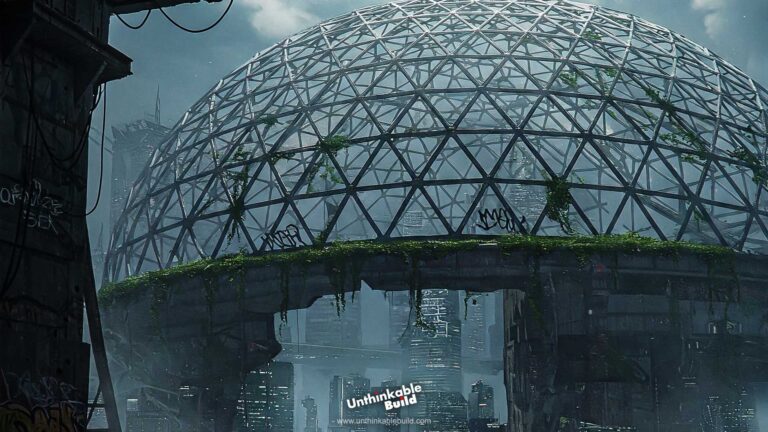Chengdu Science Fiction Museum
If you are interested in science fiction, then fantasy buildings will surely attract you. Imagine a nebula-shaped seven-pointed star floating on the glassy surface of a lake and you get to see the world inside.
This is not science fiction, but reality, which exists in all its splendor in Chengdu, a city in China’s southwestern Sichuan province. Featuring a nebula cloud and a bright star-like light at its center, this futuristic museum welcomes the public with all the paraphernalia you’d expect to see in a science fiction movie.
As soon as you enter this museum, you will feel yourself in a different world, as if all the imaginations have come true in front of you. Designed by renowned German architect Patrick Schumacher, this masterpiece was inaugurated in 2023 on the occasion of the 81st World Science Fiction Convention, the world’s largest sci-fi event, and prestigious Hugo Awards for the very first time in China. This event marks an important milestone for Chengdu and its science fiction community.
Today we will tour Chengdu’s Science Fiction Museum, which is as mysterious from the outside as it is fascinating from the inside. Chengdu is not only known as the home of the Giant Panda, but the city has also been famous for publishing science fiction in China for the past 5 decades, and this museum pays tribute to the rich legacy of Chinese science fiction authors.
With a population of around 20 million, Chengdu city attracts local and foreign tourists due to its rich history, diverse culture and fascinating natural scenery.
The city, home to thousands of years of history and culture dating back to 3300 BC, is now coming to the world with a new identity. Chengdu has always played a leading role in the journey of Chinese science fiction to the modern era.
Also Read: Saudi Arabia is Constructing World’s Longest Sports Boulevard in Riyadh
The Chengdu Science Fiction Museum is located in the city’s Pidu District, which is prominent in the fields of science and innovation in China. Designed by renowned Zaha Hadid Architects, this engineering marvel is inspired by the spiral pattern of an expanding nebula.
A designer of the construction company says that this museum is designed differently from every angle. From one side, it looks like a sloping mountain, while from the other side, its roof takes the form of a cloud. Aerial view of the museum depicting gold-leaf masks, unearthed in recent archaeological excavations near Chengdu, dating back to the Bronze Age.
The Chengdu Science Fiction Museum built in Jingrong Lake is not only a sight to behold, but also an engineering marvel, built on a vast area of 59,000 square meters.
To host the 81st annual World Science Fiction Convention to be held from October 18 to 22, 2023, the construction of this megaproject, three times the size of Sydney Opera House, began in 2022 and was completed in a record time of 12 months.
Zaha Hadid Architects, the creator of this uniquely designed museum, has already completed a number of exemplary architectural projects in China. Among them, the magnificent buildings such as Beijing Daxing International Airport, Nanjing International Youth Cultural Center, Wangjing SOHO and Jockey Club Innovation Tower are particularly noteworthy.
Using digital technology, the building has been designed to suit Chengdu’s subtropical climate. After analyzing the weather and environmental parameters of the city, changes were made regarding the size and angle of the roof top to protect the interior of the museum from direct sunlight.
Chengdu Science Fiction Museum houses exhibition galleries, multi-function halls, theatres and conference centers, while the skylight central atrium at the heart of the building offers a mesmerizing view of the snow-capped mountains.
Chengdu Science Fiction Museum conforms to the highest 3-star standard of China’s Green Building Program and uses a sustainable approach. The large roof canopy is adorned with a series of solar panels to help power the building, ensuring low carbon emissions into the atmosphere. In addition, the park adjacent to the museum has been landscaped with native trees and plants, which act as natural reservoirs for rainwater.
Apart from this, this initiative has made it possible to increase biodiversity across the city in addition to prevention and mitigation of flood disasters.
The building’s vast atrium is illuminated by a large natural skylight, allowing this part of the museum to enjoy direct natural views. There is also a wide floor-to-ceiling window to reduce the need of artificial light during the day, while facing the breath-taking scenery of high mountains.
Chengdu’s population has grown significantly over the past few decades, and the city has recently been listed among China’s first-tier cities based on lifestyle, commercial opportunities, and transportation.
District Piedu, the host of the Science Fiction Museum, is spread over an area of 4.6 square kilometers, which is described as the city of the future. In the near future, many new universities, offices and laboratories will be established in this area. The multi-billion dollar science fiction industry here consists of publishing books and releasing movies.
Few people may know that Chengdu is also home to Science Fiction World, one of the most widely read science fiction magazines in the world. The publication of this magazine was started in 1979.
Founded in 1939, the World Science Fiction Convention or WorldCon is the world’s largest science fiction event, named after Hugo Grinsbeck, a science fiction pioneer and creator of the world’s first science fiction magazine. The Hugo Awards have been presented at WorldCon by the World Science Fiction Association since 1955.
Dave McCarthy, vice-chair of Chengdu Worldcon 2023 and one of the organizers of the event for the past two decades, says that the Science Fiction Museum has been the best Worldcon host ever.
Also Read: Mind-Blowing Mega Projects in China You Need to See
WorldCon organizers say that holding the event at a special location in Chengdu, rather than a conventional convention center, made the event even more special, as the purpose-built building is closer to the true spirit of science fiction.
In 2015, Chinese writer Liu Saxon’s ‘The Three-Body Problem’ won the 73rd Hugo Award for Best Novel, followed by Chinese author Hao Jingfang’s ‘Folding Beijing’ in 2016. Bridging the past, present and future, the Chengdu Science Fiction Museum will be a center of inspiration and innovation not only for the city but for the whole of China.
Created precisely for its unique location, the Chengdu Science Fiction Museum appears to float above the surface of the lake. The ripples in its composition emanate from a single point at the center of the ceiling, where the expanding nebula cloud is reflected in the center of the 7-pointed star. This scene transforms the entire museum into a vast cloud of stars that are radiating energy waves around it from different angles.
After visiting the Chengdu Science Fiction Museum, many people feel that the outside world is primitive, slow-moving and impermanent, as it takes some time to understand one’s surroundings after returning from the world of imagination to reality. Even so, most people say that a visit to the Chengdu Science Fiction Museum changes the way you think about possibilities.
China has been developing rapidly in the field of science and technology for the past few decades and is making it clear to its citizens with inspiring mega projects like Chengdu Science Fiction museum, that the journey from imagination to reality can be completed sooner or later.
It is characteristic of the best fiction writer that he can create such an environment and events in the imagination that the mind can easily accept. For fertile minds, projects like the Chengdu Science Fiction Museum help create inspiration that expands their imaginations and helps them plan for the future.
This is the age of technology which is developing rapidly and it is felt that in the near future today’s technology will have the same status as medieval times for us and you. How interested are you in science fiction and do you think such literature can play an important role in attracting young minds to science and technology?







